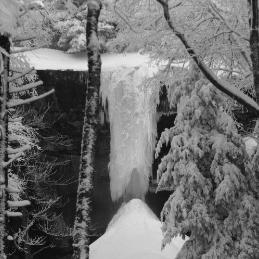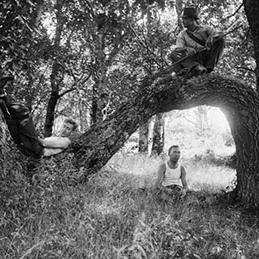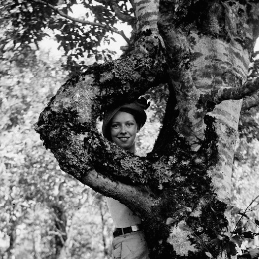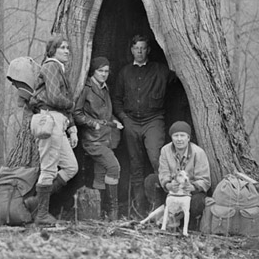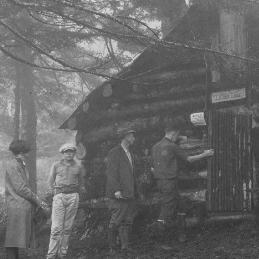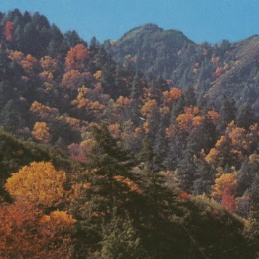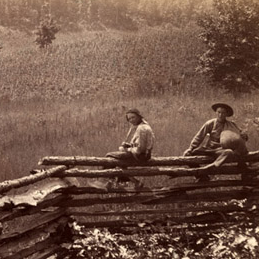Browse
Export 94 results:
Filters: Keyword is Spruce-Fir forests [Clear All Filters]
A Census of a Breeding Bird Population in a Virgin Spruce-fir Forest on Mt. Guyot, Great Smoky Mountains National Park In Zoology. Knoxville, TN: The University of Tennessee, 1968.
"Annotated List of Insects Infesting Bark and Wood of Fraser Fir." Journal of Economic Entomology 62, no. 1 (1969): 249-250.
Code Red: America's Five Most Polluted National Parks. Appalachian Voices, National Parks Conservation Association, Our Children's Earth Foundation, 2002.
"Microbial community diversity and composition across a gradient of soil acidity in spruce-fir forests of the southern Appalachian Mountains." Applied Soil Ecology 61 (2012): 60-68.
Lead in Vegetation, Forest Floor Material, and Soils of the Spruce-Fir Zone, GSMNP In The Southern Appalachian Spruce-Fir Ecosystem: Its Biology and Threats. Gatlinburg, TN: Uplands Field Research Laboratory, 1984.
"Genetic Structure of Southern Appalachian “Sky Island” Populations of the Southern Red-backed Vole (Myodes gapperi)." Journal of Mammology 88, no. 3 (2007): 759-768.
Gap and Stand Dynamics of a Southern Appalachian Spruce-Fir Forest In Botany. Vol. Doctor of Philosophy. Knoxville, Tenn.: The University of Tennessee, 1985.
"Application of a Spruce-Fir Forest Canopy Gap Model." Forest Ecology and Management 20 (1987): 151-169.
"Two Decades of Change in a Great Smoky Mountains Spruce-Fir Forest." Bulletin of the Torrey Botanical Club 115, no. 1 (1988): 25-31.
"Fraser Fir Mortality and the Dynamics of a Great Smoky Mountains Fir-Spruce Stand." Castanea 53, no. 3 (1988): 177-182.
The Status of the Balsam Woolly Aphid in North Carolina and Tennessee. Asheville, NC: U.S. Forest Service, 1963.
"Dry Weight of Trees and Saplings from The Great Smoky Mountains National Park (GSMNP) and Eastern Tennessee." In Dry-weight and Other Data for Trees and Woody Shrubs of the Southeastern United States, 15-21. Oak Ridge National Laboratory, 1971.
"The Latitude-Elevation Relationship for Spruce-Fir Forest and Treeline along the Appalachian Mountain Chain." Vegetatio 94, no. 2 (1991): 153-175.
"The Dendroecology of Red Spruce Decline." In Ecology and Decline of Red Spruce in the Eastern United States, 192-231. Vol. 96. New York, NY: Springer-Verlag, 1992.
Ground Vegetation Patterns of the Spruce-Fir Area of the Great Smoky Mountains National Park. Knoxville, TN: University of Tennessee, 1957.
Late-Quaternary History of the Spruce-Fir Ecosystem in the Southern Appalachian Mountain Region In The Southern Appalachian Spruce-Fir Ecosystem: Its Biology and Threats. Gatlinburg, TN: Uplands Field Research Laboratory, 1984.
Understory Change in Spruce-Fir During the First 16-20 Years Following the Death of Fir In The Southern Appalachian Spruce-Fir Ecosystem: Its Biology and Threats. Gatlinburg, TN: Uplands Field Research Laboratory, 1984.
Investigations of Balsam Woolly Aphid-Fraser Fir Interaction: Feeding Site Characteristics and Wound Response. Knoxville, TN: The University of Tennessee, 1985.
"Review of the Biology and Ecology of the Balsam Woolly Aphid in Southern Appalachian Spruce-Fir Forests." In The Southern Appalachian Spruce-Fir Ecosystem: Its Biology and Threats, 36-50. Research/Resources Management Report. Gatlinburg, TN: Uplands Field Research Laboratory , 1984.
"High-Elevation Forest Soils of the Southern Appalachians: I. Distribution of Parent Materials and Soil-Landscape Relationships." Soil Science Society of America Journal 55, no. 6 (1991): 1629-1637.
"High-Elevation Forest Soils of the Southern Appalachians: II. Geomorphology, Pedogenesis, and Clay Mineralogy." Soil Science Society of America Journal 55, no. 6 (1991): 1782-1791.
"Characterization of Eastern U.S. Spruce-Fir Soils." In Ecology and Decline of Red Spruce in the Eastern United States, 40-63. Vol. 96. New York, NY: Springer-Verlag, 1992.
Status of the Balsam Woolly Aphid in the Southern Appalachians-1970. Asheville, NC: U.S. Forest Service, 1971.
Preliminary Report No. 4: Balsam Woolly Aphid Detection Survey. Atlanta, GA: U.S. Forest Service, 1963.
"Alternation and Coexistence of Tree Species." The American Naturalist 111, no. 977 (1977): 69-89.





